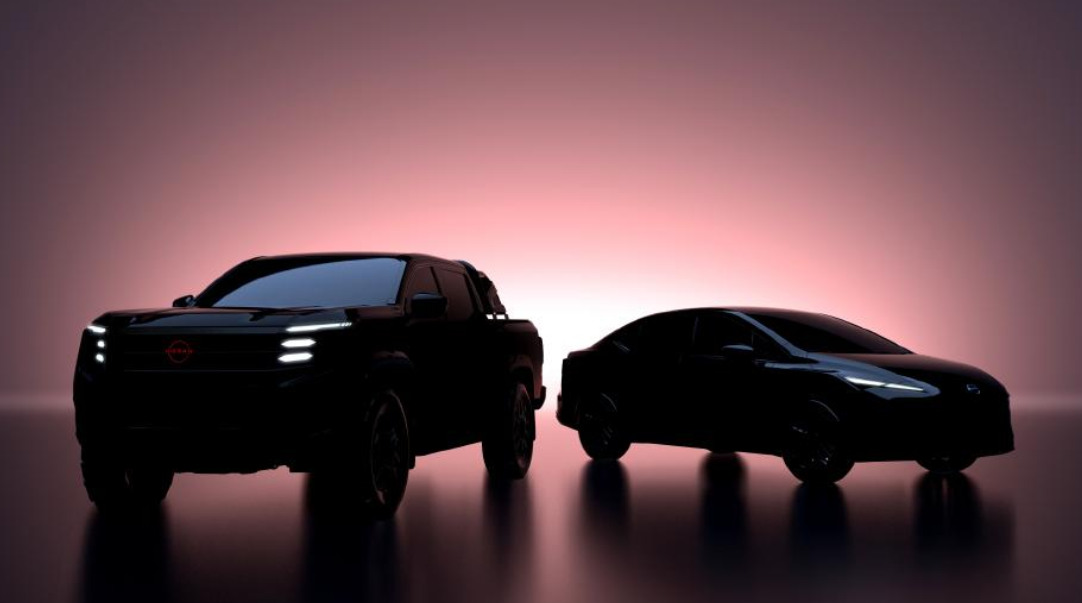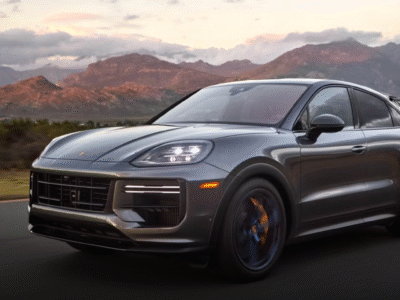
Nissan Motor Company is preparing for one of the most ambitious product offensives in its recent history. The Japanese automaker, currently undergoing restructuring after years of declining sales and financial challenges, has announced plans to launch more than 10 new models for the North American market between 2025 and 2027, including electric vehicles, hybrids, and improved combustion models.
This bold move is part of a global strategy designed to restore competitiveness in key segments, strengthen the brand’s presence in the United States and Canada, and reinforce its commitment to sustainable mobility. Among the new models are redesigned icons such as the Nissan Leaf, Sentra, and the Rogue and Pathfinder SUVs, along with an all-new off-road-oriented electric vehicle.
The New Leaf: From Urban Hatchback to Electric Crossover
One of the most significant transformations for Nissan will be the complete redesign of the Leaf, which will shift from its traditional compact hatchback shape to become an electric crossover. This change aligns with current market trends, as consumers increasingly prefer the versatility and aesthetics of SUVs.
The next-generation Leaf will be built on the CMF-EV platform, the same architecture underpinning the Nissan Ariya, and will offer major improvements in range, efficiency, and connectivity. Crucially, it will also be compatible with the NACS charging connector, allowing access to Tesla’s Supercharger network, a key competitive advantage.
Nissan promises a sleeker, more aerodynamic design, 19-inch alloy wheels, and a refined interior with a panoramic glass roof. Production will remain global, with regional adaptations for Europe and Japan, but North America will be the launch priority.
Rogue and Pathfinder: Evolution of Family SUVs
In the SUV segment, Nissan is preparing major updates for two of its best-selling models — the Rogue (known as the X-Trail in other regions) and the Pathfinder.
The Rogue 2026 will introduce a more efficient powertrain lineup, including gasoline, hybrid, and plug-in hybrid (PHEV) variants. The PHEV model will share its platform and e-Power technology with the Mitsubishi Outlander, leveraging the Renault-Nissan-Mitsubishi Alliance. This system uses a 1.5-liter gasoline engine as a generator to feed an electric motor, providing an EV-like driving experience without frequent charging stops.
Meanwhile, the Pathfinder will undergo a mid-cycle refresh, featuring a redesigned front fascia and updated interior technology. Nissan aims to keep it competitive against popular three-row SUVs such as the Toyota Highlander and Ford Explorer.
The Sentra Returns: More Style and Efficiency
The Sentra, one of Nissan’s longest-standing models, will also receive a complete redesign. Although the compact sedan segment has declined in recent years due to the SUV boom, Nissan believes that a more modern design, improved fuel efficiency, and advanced technology will help the Sentra remain relevant.
Expect the new Sentra to feature mild-hybrid technology and a sportier variant targeting urban drivers. It will also offer a significant boost in connectivity, including Over-the-Air (OTA) software updates and advanced driver-assistance systems through Nissan’s ProPILOT suite.
A New U.S.-Built Electric SUV
Perhaps the most intriguing element of Nissan’s plan is the announcement of a new adventure-oriented electric SUV, to be built at the company’s Canton, Mississippi plant starting in 2027.
Although the model’s name has not yet been confirmed, early previews suggest a rugged, boxy design with futuristic LED lighting and dual-motor all-wheel drive. Nissan aims to position this vehicle as a versatile electric SUV capable of handling both urban environments and off-road adventures, competing directly with models like the Rivian R2 and Ford Explorer EV.
A Global Strategy Focused on Electrification and Profitability
Nissan’s North American launch plan is part of a broader global product offensive, which will see more than 14 new or refreshed vehicles introduced worldwide. Beyond the Leaf and Sentra, upcoming releases will include the electric Micra and Juke for Europe, along with new pickup trucks and MPVs for Asia.
The automaker’s dual objectives are to accelerate electrification and restore profitability after several turbulent years. Following the leadership changes and the abandoned merger talks with Honda, Nissan is now pursuing a pragmatic approach, leveraging its alliance with Renault and Mitsubishi to share platforms and development costs.
A New Chapter for Nissan in North America
Through this renewed product strategy, Nissan aims to rebuild its reputation and reclaim market share in one of its most critical regions. Once a leading Japanese brand in the United States, Nissan lost ground to rivals like Toyota, Honda, and Hyundai due to an aging lineup and a lack of innovation in recent years.
Now, with a mix of electric, hybrid, and improved combustion models, the company hopes to re-engage its loyal customer base while capturing new buyers seeking efficiency and advanced technology.
The challenge ahead is considerable. Nissan must compete in a market where consumers are increasingly demanding and the EV segment is dominated by Tesla and rising Chinese manufacturers. However, the diversity, modernization, and strategic focus of its upcoming lineup may mark the beginning of a new era of growth and stability for the Japanese automaker in the Americas.







